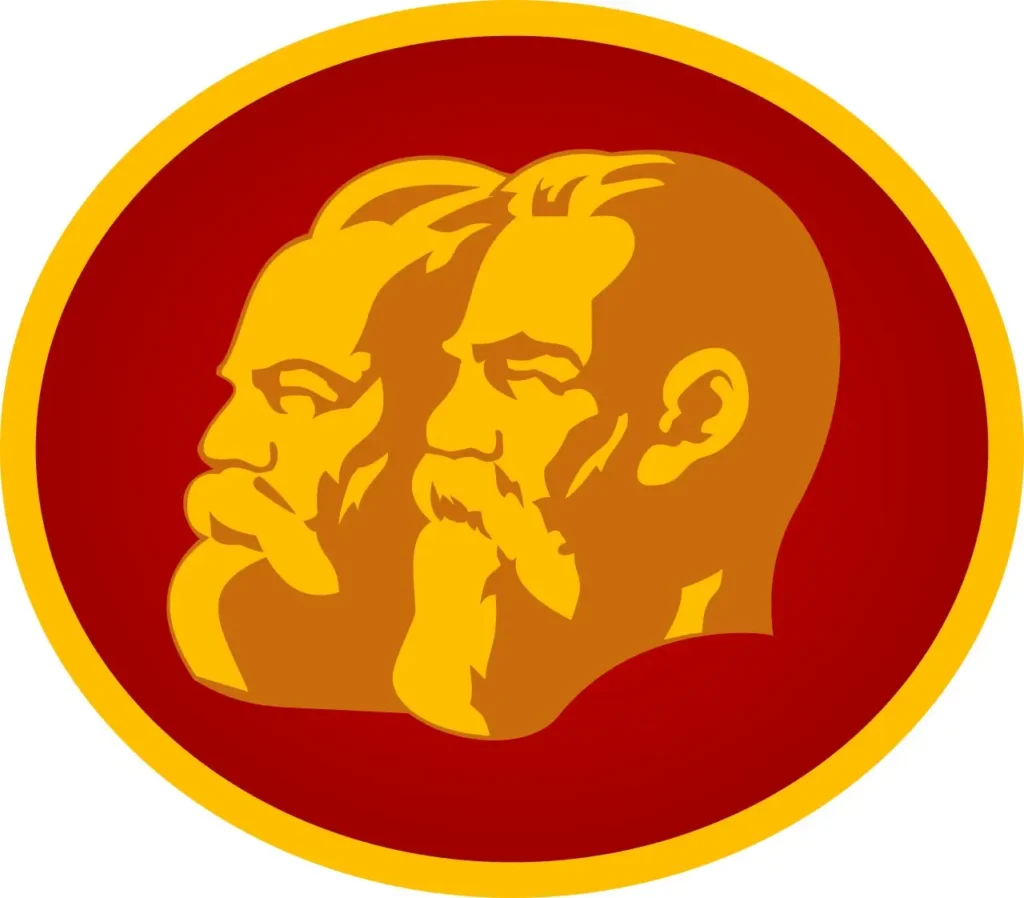From Nazism to Marxism: A Detailed Comparison of Major Ideologies
Table of Contents
Introduction
From Nazism to Marxism: A Detailed Comparison of Major Ideologies. Nazism, communism, socialism, and Marxism are four distinct ideological frameworks that have profoundly influenced global politics and history. Understanding these ideologies requires examining their origins, core principles, and their similarities and differences. This post will provide an in-depth comparison of these ideologies to offer a clear and comprehensive understanding.
Nazism

Origins and Core Principles:
National Socialism, or Nazism, emerged in Germany in the early 20th century. It was primarily associated with Adolf Hitler and the National Socialist German Workers’ Party (NSDAP). The ideology is characterized by:
- Racism and Anti-Semitism: Central to Hitler’s Nazism is the belief in the superiority of the Aryan race and a deep-seated hatred of Jews, which led to the Holocaust.
- Authoritarianism: Nazism advocates for a totalitarian state where a single leader holds absolute power.
- Extreme Nationalism: Extreme nationalism and the belief in the destiny of Germany to dominate Europe were core tenets. It must be pointed out that Nationalism is a good thing as long as it’s about putting your country’s needs first. It’s like a family putting the needs of their family first, then helping others when possible. It’s just normal human behavior.
- Militarism: A strong emphasis on military strength, not just to protect their country, but more geared towards glorification of war and conquest.
- Anti-Communism and Anti-Socialism: Nazis opposed Marxism, communism, and socialism, viewing them as threats to their ideology and state.
Communism

Origins and Core Principles:
Communism is an ideology that emerged from the writings of Karl Marx and Friedrich Engels in the 19th century. It advocates for a classless, stateless society where the means of production are communally owned. Key principles include:
- Class Struggle: Central to Marxist theory is the conflict between the bourgeoisie (capitalist class) and the proletariat (working class).
- Revolution: Marxists believe that a proletarian revolution is necessary to overthrow the capitalist system.
- Common Ownership: Abolition of private property and the establishment of common ownership of the means of production. The Marxist motto is ” You will own nothing and you will be happy”.
- Stateless Society: The ultimate goal is to achieve a classless and stateless society where the government is no longer necessary.
Socialism

Origins and Core Principles:
Socialism is a broad and diverse ideology that also has roots in the 19th century, with contributions from thinkers like Robert Owen, Charles Fourier, and later, Karl Marx. While it shares some goals with communism, it differs significantly in methods and implementation. Key aspects of socialism include:
- Social Ownership: Unlike communism’s call for complete communal ownership, socialism advocates for social or public ownership of key industries and services.
- Economic Planning: Socialists often support planned economies to varying degrees to ensure resources are distributed according to need rather than profit.
- Welfare State: Many socialist movements aim to establish a welfare state that provides universal healthcare, education, and social security.
- Democratic Governance: Unlike the authoritarian tendencies of communism in practice, many socialists advocate for democratic political systems.
Marxism

Origins and Core Principles:
Marxism, developed by Karl Marx and Friedrich Engels, is the theoretical foundation for much of socialist and communist thought. It provides a critical analysis of capitalism and proposes a pathway towards a socialist and eventually communist society. Key elements include:
- Historical Materialism: Marx’s theory that history progresses through stages driven by material economic conditions and class struggle.
- Dialectical Materialism: The philosophical approach that everything in society and nature is in constant change and conflict, leading to development.
- Critique of Capitalism: Marx’s extensive critique of the capitalist system, highlighting exploitation, alienation, and inherent contradictions.
- Revolutionary Praxis: The belief that theory must be connected with practical action to bring about revolutionary change.
Key Differences
- Ideological Foundations:
- Nazism: Rooted in racial purity, extreme nationalism, and authoritarianism.
- Communism: Based on class struggle, common ownership, and the eventual abolition of the state.
- Socialism: Emphasizes social ownership, economic planning, and welfare, with a preference for democratic governance.
- Marxism: A theoretical framework analyzing capitalism and advocating for revolutionary change towards communism.
- Economic Systems:
- Nazism: Maintained a capitalist economy but under strict state control and with significant state intervention.
- Communism: Advocates for a classless, stateless society with communal ownership of production.
- Socialism: Supports social ownership and economic planning but allows for various degrees of market mechanisms.
- Marxism: Focuses on the transition from capitalism to socialism and eventually to communism.
- Political Structures:
- Nazism: Totalitarian regime with a single-party state led by a dictator.
- Communism: In practice, has often led to single-party states, although the theoretical end goal is a stateless society.
- Socialism: Can be implemented in both democratic and authoritarian systems, though democratic socialism advocates for political pluralism.
- Marxism: Envisions a transitional state (dictatorship of the proletariat) leading to a stateless, classless society.
- Methods of Change:
- Nazism: Advocated for violent overthrow and war to achieve its goals.
- Communism: Calls for proletarian revolution to dismantle capitalist structures.
- Socialism: Can pursue change through democratic means (democratic socialism) or revolutionary means (revolutionary socialism).
- Marxism: Emphasizes revolutionary praxis but also recognizes the role of theory and analysis.
Key Overlaps
- Anti-Capitalist Sentiment:
- Communism, Socialism, and Marxism share a critical stance towards capitalism, though they differ in their approaches and end goals.
- Social Welfare:
- Socialism and some strands of communism advocate for social welfare systems to support the population, though the extent and methods vary.
- State Intervention:
- Nazism and Socialism both involve significant state intervention in the economy, albeit for vastly different ideological reasons.
- Revolutionary Rhetoric:
- Communism and Marxism both emphasize the need for revolutionary change to achieve their objectives.
- Collectivist Orientation:
- All four ideologies, to varying degrees, prioritize the collective over the individual, though Nazism’s collectivism is based on race, while the others focus on class or social ownership.
Democrats

The forms of government that the Democrat Party ideology is closest to is socialism and Nazism. Here’s why:
Socialism and Nazism
Economic Policies:
- Social Ownership: Left-leaning governments typically advocate for increased public ownership and control of key industries and services, such as healthcare, education, and infrastructure.
- Welfare State: They often support extensive social safety nets, including universal healthcare, unemployment benefits, and social security.
- Economic Planning: While not necessarily advocating for a fully planned economy, left-leaning governments as in Socialism and Nazism often support regulations and policies aimed at reducing economic inequality and ensuring fair distribution of resources.
Political Structures:
- Democratic Governance: Left-leaning governments generally operate within democratic frameworks, advocating for political pluralism and civil liberties.
- Social Justice: They prioritize policies aimed at achieving social justice, including measures to combat discrimination and promote equality. The democrat party in the US is more in line with Nazism in this regard as their false social justice initiative is discriminatory as it puts other races over Caucasians. The Democrat Party in the US is waging war on whites, almost making the US the new South Africa where it’s open season on whites. They welcome and encourage violence against whites and destruction of private property owned by whites. Much in the same way Nazi Germany did with the Jewish people in Nazi Germany.
Why Not the Others?
Marxism:
- Revolutionary Change: Marxism emphasizes the need for a proletarian revolution to overthrow capitalist systems, aiming for a classless, stateless society. Most left-leaning governments do not advocate for revolutionary overthrow but rather seek change through democratic processes. Even if they have to do it illegally or by committing treason. As in the wide spread voter fraud and censorship of social media and news outlets in the 2020 election.
Communism:
- Classless Society: Communism aims for the abolition of private property and the establishment of a classless society. Left-leaning governments may push for reducing economic inequality but typically do not aim to abolish private property entirely or establish a fully classless society.
- Historical Implementation: Communism, in practice, has often led to authoritarian regimes, which is generally not the approach of contemporary left-leaning governments.
Nazism:
- Fundamentally Different Ideology: Nazism is rooted in racial purity, extreme nationalism, and authoritarianism. Left-leaning governments fundamentally oppose these principles, focusing instead on inclusivity, social justice, and democratic governance. Although it can’t be totally eliminated from the mix as the democrat party promotes violence and censorship of whites.
Conclusion
From Nazism to Marxism: A Detailed Comparison of Major Ideologies
Overall, while the Democrat Party’s actions can encompass a range of policies and approaches, their focus on social welfare, public ownership of key industries, and democratic processes aligns most closely with socialism. They typically advocate for economic and social reforms within the framework of a democratic society, aiming to reduce inequality and promote social justice. They do this at the cost of white’s safety and rights.
While Nazism, communism, socialism, and Marxism share certain superficial similarities, particularly in their critiques of capitalism and their collectivist orientations, they are fundamentally different ideologies with distinct origins, goals, and methods. Nazism’s racial ideology and authoritarianism starkly contrast with the class-based analysis and revolutionary goals of communism and Marxism, as well as the social welfare focus of socialism. Understanding these differences and overlaps provides a clearer picture of the complex landscape of political ideologies that have shaped modern history.
It’s hard to classify or define any group because the opinions and definitions change over the years. If you ask 10 different history scholars about the definitions of each group, you would get ten different answers. We just have to accept the variations and just try and understand the basics and then remember that there is no certain definition for each group as opinions will vary too much in the present day.




